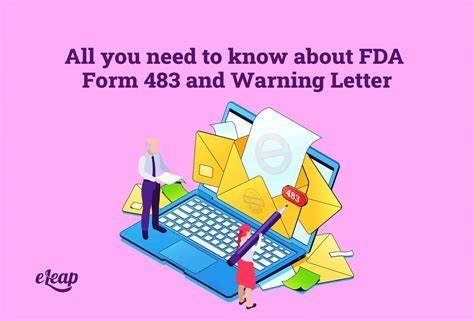Learn how to effectively respond to FDA Form 483 and Warning Letters. Discover best practices for compliance, corrective action plans, and maintaining open communication with the FDA..
Food and Drug Administration (FDA) oversee strict regulations over life science companies in the United States, that is why it is necessary to be on top of Food and Drug Administration compliance. In any event, FDA inspections may reveal shortcoming or violations that need timely correction. Over the following articles, we will describe some important perspectives on life sciences and what companies should consider when dealing with responses to FDA inspections.
Respond in a timely manner
React fast: One of the most crucial steps to remember is that if your facility has FDA inspection findings, respond promptly. Life science companies are required to respond in a timely manner, as specified in the FDA Form 483 or Warning Letter. If no response is received in the given period of time, then this might lead to serious repercussions which also means another regulatory action.
Understand the findings
After a company receives an FDA Form 483 or Warning Letter, it is important to be able to interpret the findings.
Intermediate Action: Life Science companies need to review the Inspection Report in detail, trace the root cause of observations and prepare Corrective Action Plan.
Design solution with concrete action plan.
Creating a corrective action plan is integral in correcting issues and showing the FDA, you are committed to achieving compliance. First, the corrective action plan should be thorough and detailed regarding what steps will be taken to address each deficiency, how long it will take to complete them, and who is responsible.
Execute the mitigation plan
The corrective action plan will need to be put into place next. Corresponding to the plan, life science companies are required to make sure that all corrective actions are assigned and executed within the time frame that have been defined. Corporations must also ensure that the corrective actions are working.
Communicate with the FDA
Open communication with the FDA is critical throughout this response process. FDA expects life science companies to notify the agency of any potential actions taken for managing the data integrity issues and provide interim reports on their plans for corrective actions.
Use an outside consultant
Life science companies may also consider using a third-party consultant to help with the response phase as well. The consultant can assist in the development and implementation of a corrective action plan, as well as in communication with FDA.
Conclusion
In summary, life science companies must understand the seriousness of providing the response to FDA inspection findings to stay compliant. Companies who stay on top of addressing the t the findings by formulating a well-rounded corrective action plan, implementing it and checking for its effectiveness can establish their commitment towards compliance and ensure a strong rapport with the FDA.
Reach out or visit the BioBoston Consulting site to find out how we can help you too.


